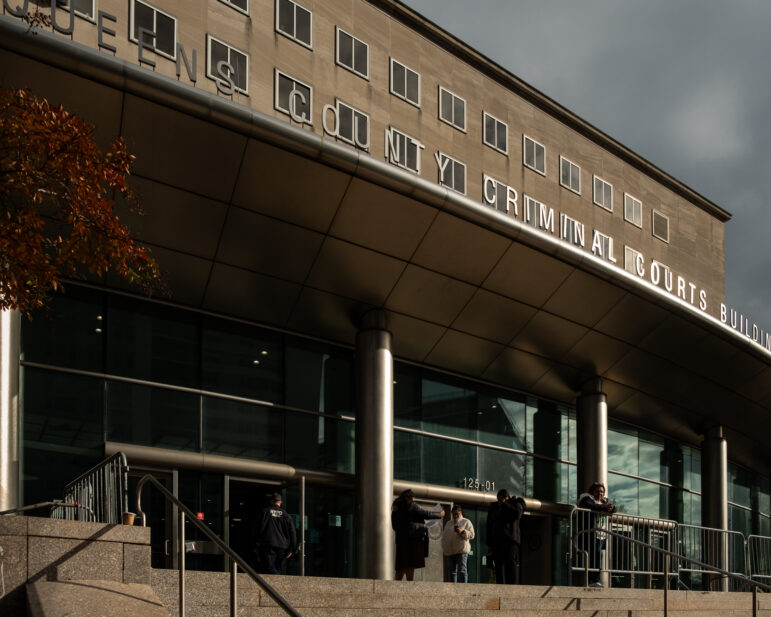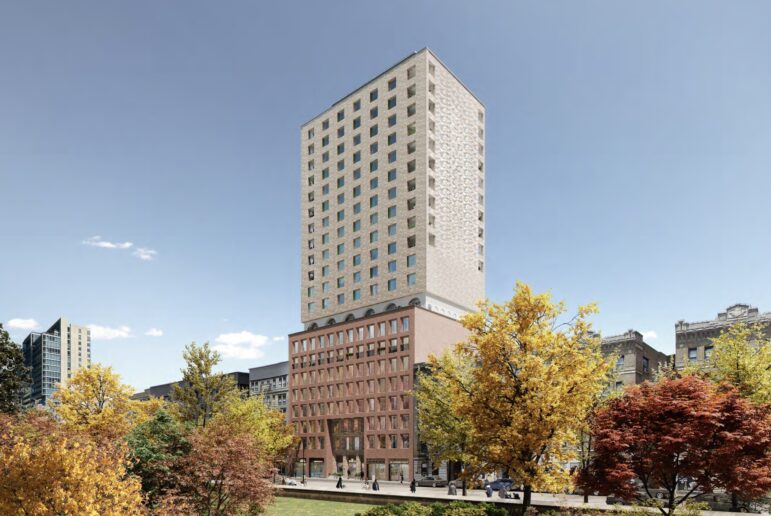From Welfare State to Real Estate: Regime Change in New York City, 1974 to the Present, by Kim Moody, The New Press, $26.95.
It’s a rare occurrence these days that something called a “welfare state” is remembered fondly, but Kim Moody does just that in this analysis of a generation of fiscal and economic policy in New York City. In this thoroughly researched and enlightening book, Moody argues New York was the target of a “structural adjustment program” established when business elites grabbed the reins of governance during the fiscal crisis of the 1970s.
In “Welfare State,” Moody, a labor economist and activist who taught labor studies at Cornell University and is now a research fellow at the Centre for Research in Employment Studies at University of Hertfordshire, finds a telling connection between the global financial capital and developing countries. He posits that the way to understand the economic shift named in the book’s title is via comparison with the “structural adjustment” packages imposed on struggling economies by the International Monetary Fund, World Trade Organization and World Bank. For many Americans, these were first brought to light by anti-globalization activists at a WTO meeting in 1999 – the “Battle of Seattle” – and continue to be protested de rigueur at Davos and other international capitalist conventions.
Ever since the Financial Control Board in 1975 imposed “fiscal discipline” on a city that had been operating like a western European social democracy, New York has been run for the benefit of big business, Moody contends. This movement is most dramatically exemplified by the scourge of “developmentalism,” in which city government functions are sublimated to the priorities of mammoth development projects, á la the once and future World Trade Center, Atlantic Yards and the far West Side. The city pays wealthy corporations to stay in the city, builds them new campuses, and in the process makes the city harder for the rest of us to live in. In Moody’s analysis, what he calls the “crisis regime” of the 1970s – followed by permanent quasi-public fixtures like the Partnership for New York City, Empire State Development Corporation and others – redistributed economic resources to Wall Street and away from social-democratic services like the higher-ed-for-all CUNY. Thus New York was ever more a company town increasingly dependent on finance, insurance and real estate (the so-called FIRE industries) and ever more vulnerable to the winds of international financial boom and bust cycles.
This makes the few winners fantastically wealthy and increases the ranks of the poor. Thirty years of structural adjustment have led to lower real wages for the mass of workers who serve business elites, a dramatic squeeze on housing affordable to anyone other than the very wealthy and increased income stratification, Moody writes. Backing up these claims, on nearly every page he cites a flurry of statistics: In 1980 the wealthiest 20 percent of New Yorkers earned 21 times that of the poorest 20 percent, but by 2005 that had risen so the wealthiest fifth of the population earned 52 times that of the poorest fifth. Real wages for all New Yorkers dropped 4.8 percent between 2000 and 2005 alone, from an hourly median of $15.13 to $14.40, according to a Fiscal Policy Institute study Moody cites. And the inflation rate for one-, two- and three-family houses in NYC was 4.1 percent, double the national rate, as housing prices are pushed ever skyward by upscale development, he argues. Meanwhile, the ravages of capitalism on the world stage drove hundreds of thousands of globalization’s refugees to New York. Waves of immigration brought a huge pool of Latina maids, Pakistani taxi drivers, Mexican construction workers and Jamaican nannies to New York to burnish the glittering skyline.
From Koch to Dinkins to Giuliani, Moody traces the increasing influence on city leadership of this class of business interests, which he argues managed to fundamentally change the way the city’s leaders look at business – no longer as one of several constituencies, but rather as the city’s primary sponsors who must be appeased with tax giveaways, policing efforts and land-use decisions. In Bloomberg, Moody argues, the business lobby got not just the willing ally it had in previous mayors, but succeeded in electing one of their own. As Bloomberg himself is fond of saying, he’s not a politician – he’s a businessman.
The theory is fascinating and Moody presents his case clearly, explaining his interpretation of the fiscal crisis, then laying out the goals and effects of the Financial Control Board – without resorting to conspiracy theories about a City Club-Rockefeller-New York Stock Exchange cabal. In a scholarly but engaging tone, supported by meticulously compiled endnotes, Moody traces the influence of the crisis regime through the ensuing 30 years by analyzing each mayoralty. The book ends with Moody’s assertion that neoliberalism triumphed in New York and can only be challenged by a broad and aggressive social movement.
This conclusion inverts the accepted history of the cause of the fiscal crisis that surely still shapes government budgeting. Conventional wisdom says NYC’s municipal bond rating bottomed out and the city entered fiscal collapse because it supported a bloated welfare state in the Great Society years of President Johnson’s and Mayor Lindsay’s administrations. But Moody argues that, in fact, global business interests headquartered in New York withdrew support from the city’s bonds precisely to reshape the city’s fiscal priorities. All those well-paid municipal union workers, the no-tuition CUNY and expansive network of public hospitals were not financially unhealthy per se, they just ran counter to the priorities that bond-rating institutions wanted New York City to pursue. It wasn’t so different from the IMF requiring a poor nation to privatize its water supply, cut education spending and invest in infrastructure to make way for international investment, Moody argues.
But while the notion is intriguing, particularly to a reader interested in poverty issues both local and international, Moody’s 291 pages are so cluttered with detailed tangents and abundant statistics that the reader can be dizzied. Each page is awash in analysis of tax receipts, population shifts, the loss of manufacturing jobs and increase of business services profits, valuations of office-space square footage versus outer-borough residential assessments and corporate tax giveaways. The progression of data shows Moody performed an admirable feat of research, but in the absence of human narrative they make “Welfare State” a daunting project for the lay reader, who may be generally conversant on public financial policy but doesn’t hold an economics degree. Moody is the author of several books on the labor movement, including “Workers in a Lean World: Unions in the International Economy,” and “U.S. Labor in Trouble and Transition,” which came out this summer just a few months after this volume appeared.
At times Moody’s arguments don’t quite work, as if he is trying too hard to squeeze every last action of city government and economic policymakers into a unified theory of everything. The book is also marred by silly typos, like locating Riverdale in Manhattan instead of the Bronx. His discussion of the potentially corrective social and political power of community and tenant organizations, however – rather than the unions and political machines that once represented working class interests – is prescient and deserves further discussion.
Reading “Welfare State” feels a little bit like homework, but homework for a class that dramatically affects one’s understanding of the world. In the end it’s a book serious urbanists will want in their library, if they can still afford an apartment with room for such things.







